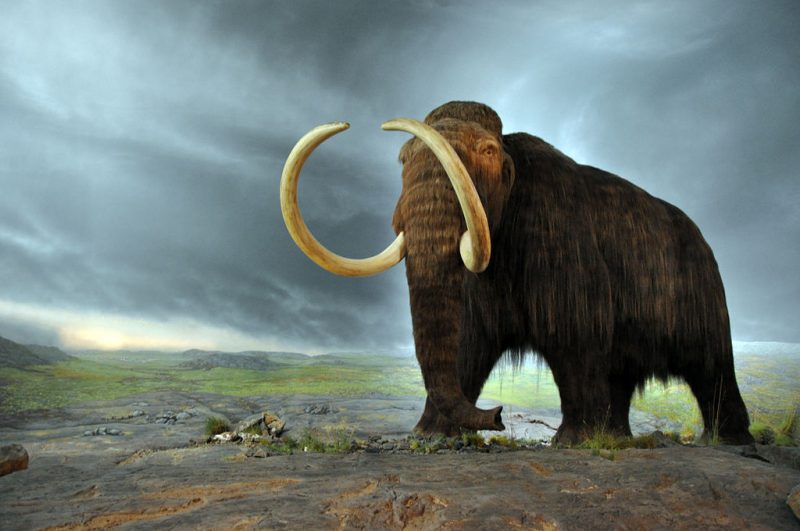The discovery of the fragments of the skins belonging to the Palaeontologists’ much beloved prehistoric creature The Woolly Mammoth on the Lyakhovsky islands has given hope for the resurrection of the beast.
The idea of cloning is relatively new, but significant strides had been taken in the direction, and scientists around the globe have attained enough understanding of the intricacies of the mechanism that require, and now they are hoping to bring back the woolly mammoths.
In the wake of an ongoing woolly mammoth resurrection project, Russian scientists are claiming to have discovered pieces of mammoth skin preserved under Siberian permafrost for more than ten millennia.
They are determined that the pieces will help them understand the mammoths’ cells, for that they are looking for the signs of any living cells in the fragments in a laboratory specially setup for the project.
Along with the woolly mammoth skins, researchers discovered the frozen remains of six other creatures from the ice age. The expedition was headed by Semyon Grigoryev who said that there are rich chances to find living cells lurking somewhere in the fragments of the skins and that they are counting on any little signs to help in their project.
Russians scientists are venturing on a joint project with researchers working in South Korea; who have made considerable advances in their ongoing animal cloning projects and have gained a reputation over the years for successful cloning of a cayote and a dog.
Now the researchers are claiming a significant development in terms of getting ever so close, to be able to clone a woolly mammoth; a resurrection from the prehistoric era. Previously the scientists working on the project had successfully inserted the genes of prehistoric beast into the DNA of a modern elephant in order to recreate mammoth’s genome sequence.
After analysing the remains found buried in the Arctic the researchers painstakingly reproduced the copies of some 14 genes of the long extinct giants. The genome experts for the Harvard University in Massachusetts were then able to integrate the freshly generated copies of the DNA into the genome of an elephant, and it functioned as normal; a milestone towards the resurrection.
In order to achieve this, genetics professor at Harvard Prof. George church deployed a very sophisticated method known as Crispr to precisely make the right changes in the desired DNA; essentially replacing some parts of a modern elephant DNA with woolly mammoth’s genes.
Prior to the study, prestigious scientists of the University of Chicago conducted a detailed comparative study of analysing the genomes of Asian elephants with that of prehistoric mammoths; in order to read the similarities and lay out a plan for future manipulation.
Speaking about the potential of the study and the subsequent research Semyon Grigoryev said that after determining the possibility of genomes integration between an elephant and woolly mammoth, the Korean researchers found out that beasts’ skin will be the best remain to hunt for any sign of living cells to be used to help move forward towards the resurrection. Lead image source
After discovering the remains of the mammoth in Arctic waters on Lyakhovsky Islands located off the northern coast of mainland Siberia, the researchers are hoping to move at a faster pace towards the end goal. The southern part of the New Siberian archipelago is believed to have been the last refuge of the ice age giants before they became extinct. Despite extensive research on the conditions of the ice age and especially on the animals that lived through these periods, scientists are not fully confident as to why these perfectly evolved creatures lost the battle of survival in the habitat they so flawlessly evolved into.
